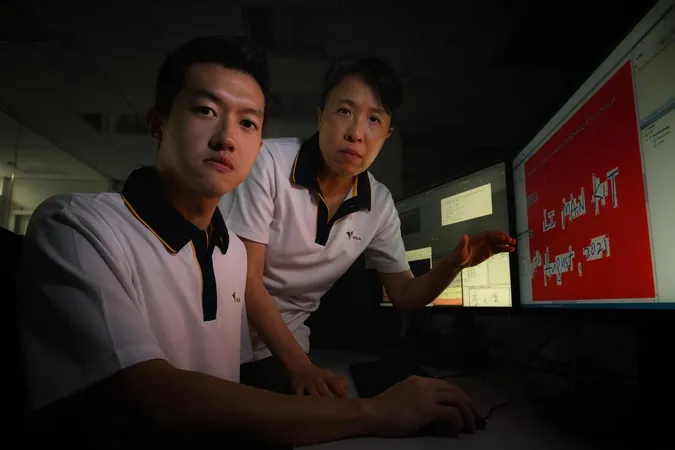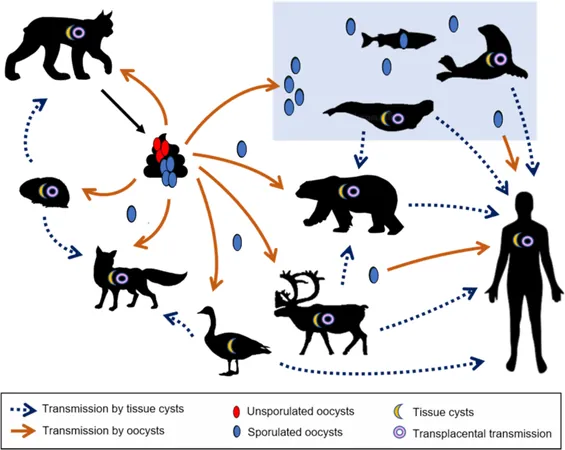
HSA Unveils Groundbreaking Forensic Techniques to Combat Document Fraud
2025-03-30
Author: Rajesh
Innovative Methods in Forensic Science
SINGAPORE – In a dramatic revelation, forensic scientists from the Health Sciences Authority (HSA) have adopted an innovative new method to expose fraudulent attempts in doctored documents. An example of this was seen recently in a legal dispute concerning a proprietary design, where a PDF document appeared to have been created before 2015.
However, upon thorough examination, the HSA's forensics team quickly discerned that the document had been altered, and its actual creation date was after 2015. This was determined by the fact that the font used in the document did not exist prior to that year.
Traditionally, questioned documents have been analyzed through standard methods, focusing on aspects like handwriting and signatures. However, the HSA Forensic Chemistry and Physics Lab has pioneered a hybrid approach since 2020, combining these traditional analyses with comprehensive investigations into the document's metadata. This meticulous method examines everything from handwriting to the intricate data within the file—analyzing each byte with precision.
Key Discoveries and Applications
Senior forensic scientist Mr. Louis Koh explained, “Data streams are like packets of information inside a file." By decoding these streams, they were able to identify a font file associated with Windows 10, which was released only mid-2015. This key finding unequivocally indicated that the document had been tampered with, as the font used wasn’t available during the claimed time of creation.
So far, the HSA has employed this cutting-edge approach in nine different cases. Another pressing instance from 2023 involved signatures with Chinese characters. Although the document seemed properly signed, forensic analysis revealed that several signatures, allegedly penned on paper, were identical down to the pixel level. This alarming discovery raised significant doubts regarding the document's legitimacy, suggesting that the signatures had been digitally copied rather than authentically signed.
Trends in Document Fraud
The rise in digital documents being submitted to HSA for forensic examination is notable, with around 10% of the more than 700 submissions made in the past three years falling under this category—a sharp increase from prior years. This uptick coincides with several high-profile cases of fraud and forgery that have surfaced in recent times, including the notorious Wirecard scandal and Singapore’s massive money laundering case involving approximately $3 billion in illicit cash and assets.
Despite these alarming trends, the HSA has not disclosed specific details about individual cases due to their sensitive nature. The recent surge in digital documentation underscored the necessity for advanced forensic techniques—prompting Mr. Koh and a fellow forensic scientist, Ms. Nellie Cheng, to collaborate. Their combined expertise has allowed them to holistically assess the integrity of digital files, marking a revolutionary leap in forensic capabilities.
Conclusion and Future Implications
When The Straits Times provided them with edited materials—a photo, video, and contract—the scientists successfully identified alterations, pinpointing when and by what devices these modifications were made.
As Ms. Cheng cautions, potential fraudsters might want to reconsider their actions. “With our multidisciplinary approach, we provide a robust means of detection that is hard to evade. So think twice before attempting to commit forgery or document tampering,” she advised.
With the pace of technological development escalating, it is imperative that forensic methods evolve alongside it, and HSA's groundbreaking approaches set a precedent in document forensics. As digital fraud continues to grow, these scientists are at the forefront in the battle against deceit and forgery in Singapore and beyond.



 Brasil (PT)
Brasil (PT)
 Canada (EN)
Canada (EN)
 Chile (ES)
Chile (ES)
 Česko (CS)
Česko (CS)
 대한민국 (KO)
대한민국 (KO)
 España (ES)
España (ES)
 France (FR)
France (FR)
 Hong Kong (EN)
Hong Kong (EN)
 Italia (IT)
Italia (IT)
 日本 (JA)
日本 (JA)
 Magyarország (HU)
Magyarország (HU)
 Norge (NO)
Norge (NO)
 Polska (PL)
Polska (PL)
 Schweiz (DE)
Schweiz (DE)
 Singapore (EN)
Singapore (EN)
 Sverige (SV)
Sverige (SV)
 Suomi (FI)
Suomi (FI)
 Türkiye (TR)
Türkiye (TR)
 الإمارات العربية المتحدة (AR)
الإمارات العربية المتحدة (AR)